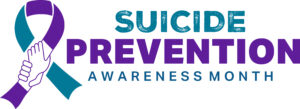 Every September, communities across the nation recognize National Suicide Prevention Awareness Month—a time to raise awareness, honor lives lost, support those impacted by suicide, and emphasize that prevention is possible. Suicide remains a leading public health concern, affecting individuals, families, and entire communities.
Every September, communities across the nation recognize National Suicide Prevention Awareness Month—a time to raise awareness, honor lives lost, support those impacted by suicide, and emphasize that prevention is possible. Suicide remains a leading public health concern, affecting individuals, families, and entire communities.
Why Awareness Matters
-
Breaking the Silence: Suicide is often surrounded by stigma, which can prevent people from seeking help. Creating open, judgment-free conversations about mental health helps reduce shame and encourages support.
-
Recognizing Warning Signs: Changes in mood, withdrawal from loved ones, expressing hopelessness, or talking about wanting to die are all signals that someone may be in crisis. Knowing these signs empowers us to reach out with compassion and care.
-
Supporting Loved Ones: Checking in with friends, family, and colleagues can make a powerful difference. A simple conversation—listening without judgment, validating their feelings, and offering support—can provide a lifeline.
-
Community Responsibility: Suicide prevention is not only an individual effort but a collective one. Schools, workplaces, faith communities, and health systems all play an important role in fostering environments that prioritize mental well-being.
A Public Health Perspective
From a public health standpoint, suicide prevention means more than responding to a crisis. It involves building resilient communities, addressing the social determinants that impact mental health (such as isolation, trauma, and lack of access to care), and ensuring that everyone has equitable access to resources and support.
Finding Help
If you or someone you know is struggling or thinking about suicide, help is available:
-
Call or text 988 to connect with the Suicide & Crisis Lifeline for immediate, free, and confidential support 24/7.
-
Encourage loved ones to talk with healthcare providers, counselors, or support groups. Professional guidance can help people move from crisis to recovery.
Together, We Can Make a Difference
National Suicide Prevention Awareness Month reminds us that each of us has a role to play. By breaking stigma, fostering connection, and promoting hope, we can create communities where fewer lives are lost to suicide—and where healing and resilience take root.
